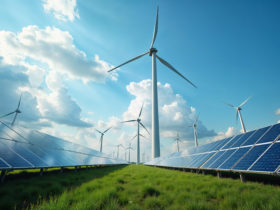Corporate India has registered subdued sequential revenue growth of 1.4% in Q3FY2023, although the revenue had grown by 17.2% on yearly basis, according to ICRA’s analysis of 620 listed companies that excludes financial sector entities.
Even though the third quarter is a seasonally strong quarter due to the holiday season, Corporate India’s sequential revenue growth was relatively muted this financial year due to inflationary headwinds weighing on consumer sentiments and an uneven sectoral trend.
Sruthi Thomas, Assistant Vice President & Sector Head, ICRA, said, “The YoY growth in revenues during Q3FY2023 was primarily driven by increased realisation levels on account of input cost inflation, along with moderate volume growth aided by revival in demand across sectors.”
The rating agency said that almost all sectors reported revenue growth in year-on-year (YoY) terms in Q3FY2023, with hotels, oil and gas, auto, airlines, and power leading the pack, and the higher revenue is likely to bolster the GDP growth in the reported quarter.
Sectors such as gems and jewellery, airlines, hotels, capital goods, and fertilisers posted robust revenue growth on a quarterly basis due to continued price hikes and strong demand supported by festive period sales. Meanwhile, other sectors like chemicals, consumer durables, logistics, textiles and power witnessed a sequential decline in revenues during the quarter due to soft demand and lower realisation, following decrease in input costs, ICRA said in its report.
Financial Performance
ICRA’s analysis showed that that the operating profit margins (OPM) of Indian companies contracted by 237 bps on a yearly basis Q3FY2023 due to inflation in input costs, driven by rise in commodity prices and energy costs, which could not be entirely passed on to the customers. However, OPM expanded by 180 bps sequentially to 16.3% during the quarter, aided by a softening in the prices of many commodities on a sequential basis and general price hikes undertaken by the entities. The sequential margin expansion was visible in select sectors such as aviation, hotels, cement, and power.
Meanwhile, the interest coverage ratio of ICRA’s sample, adjusted for sectors with relatively low debt levels (IT, FMCG and pharma) saw a year-on-year moderation in Q3FY2023 to 4.3 times from 5.1 times, helped by lower earnings in select sectors as compared to historic trend, and higher interest rates as the Reserve Bank of India increased repo rate. The interest coverge ratio during the Q2FY23 was 4 times.
Further, increased reliance on external borrowings by India Inc. due to suppressed earnings and increase in working capital intensity across many sectors on account of higher raw material prices, higher capital expenditure undertaken for future expansion, and higher stocking to mitigate supply chain uncertainties were other contributing factors for moderation in interest coverage.
Outlook
The rating agency said that it expects sequential recovery in the overall performance of India Inc. And it is dependent upon how well the companies are able to cope with the headwinds going forward. General price increases taken by entities across sectors, along with stabilisation of input costs and easing of supply chain constraints such as semiconductor chip shortage, can result in margin recovery in the coming quarters.
However, concerns of a global recession, uncertainties due to the ongoing geo-political situation may adversely impact demand sentiments and derail the pace of recovery. Furthermore, the movement in foreign exchange rates would impact the revenue growth and earnings profile of Corporate India.





